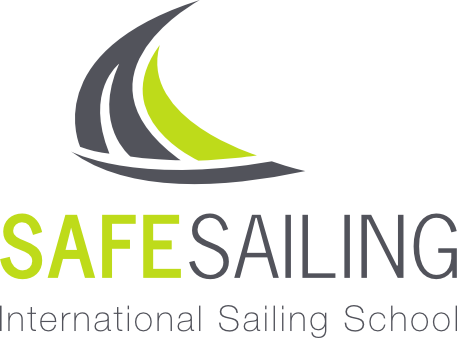Maritimes Wissen
MMSI Number

Relaxed helming in the North Sea
MMSI / AIS
Which way is information on a vessel’s flag found?
A lot of static (MMSI, name, dimensions etc) and dynamic (position, speed, course etc) information is constantly being transmitted via a vessel’s AIS. However, no information on the vessel’s flag is directly included in these transmissions. Still, it is possible to „decipher“ the flag of any vessel using her MMSI number.
A Maritime Mobile Service Identity (MMSI) is a nine-digit number which is uniquely assigned to identify (among other stations) ship stations. Thus, every vessel has her own, unique MMSI number. This number is sent, in digital form, over a radio frequency channel and is included, as already mentioned, in the AIS-transmitted information.
The first digit of an MMSI depends on the kind of station to which it is assigned. So, MMSIs starting with any number between 2 to 7 refer to ship stations. The initial digit of a ship station determines the vessel’s area of origin:
2 = Europe
3 = North America, Central America and Caribbean
4 = Asia
5 = Oceania
6 = Africa
7 = South America
The next 2 digits make each MMSI country-specific. This is how the vessel’s flag can be identified!
For example:
247 = Italy, 205 = Belgium (notice that due to the fact that these countries are European, both their MMSIs begin with the number 2)
316 = Canada
503 = Australia
632 = Guinea
So, the first 3 digits of any MMSI number are indicative of the respective vessel’s flag. These 3 digits are also called Maritime Identification Digits (MID). Note that some countries have more than one MID assigned to them.
For example:
MIDs 232, 233, 234, 235 all refer to United Kingdom
MIDs 351, 352, 353, 354, 355, 356, 357, 370, 371, 372, 373 all refer to Panama
In general, an additional MID is assigned to a country in cases where the MMSIs produced using the existing MID(s) is more than 80% exhausted and the rate of assignments is such that 90% exhaustion is foreseen. This is why countries with extensive maritime activity have multiple MIDs assigned to them.
For a full table of assigned MID codes, click here.
Information: Marine Traffic
AIS
The Automatic Identification System (AIS) is an automated, autonomous tracking system which is extensively used in the maritime world for the exchange of navigational informational between AIS-equipped terminals. Thanks to it, static and dynamic vessel information can be electronically exchanged between AIS-receiving stations (onboard, ashore or satellite).
IMO
Actually, as from December 2004, the International Maritime Organisation (IMO) requires all passengers‘ vessels, as well as, all commercial vessels over 299 Gross Tonnage (GT) that travel internationally to carry a Class A AIS transponder (which transmits and receives AIS data) aboard (smaller vessels can also be equipped with a Class B AIS transponder). This decision came as a result of the 2002 SOLAS (Safety of Life at Sea) agreement’s relative mandate.
GPS
AIS transponders (on vessel stations) include a GPS (Global Positioning System) receiver which collects the subject vessel’s position and movement details. Such (dynamic) details along with other static information provided by the vessel’s crew are automatically broadcasted at regular intervals via a built-in VHF transmitter using 2 specific VHF channels (161.975 Mhz and 162.025 Mhz – 87 & 88 old VHF channels).
AIS-Data
The periodic AIS-data information can be received by other vessel or base stations (provided they are within range). Then, with the use of special software, it can be processed and depicted on chart plotters or on computers (for example, on the MarineTraffic Live Map). AIS-data can also be received by satellites – in this case, the term Sat-AIS is used (Satellite AIS or S-AIS).
Avoid collisions
AIS was originally developed by IMO as a standard which would help vessels to avoid collisions while assisting port authorities to control marine traffic with more efficiency. However, the fact that its capabilities could become applicable to a wider spectrum of maritime-related business fields, soon became clear!
You can’t buy happiness but you can go sailing and that’s kind of the same thing.

